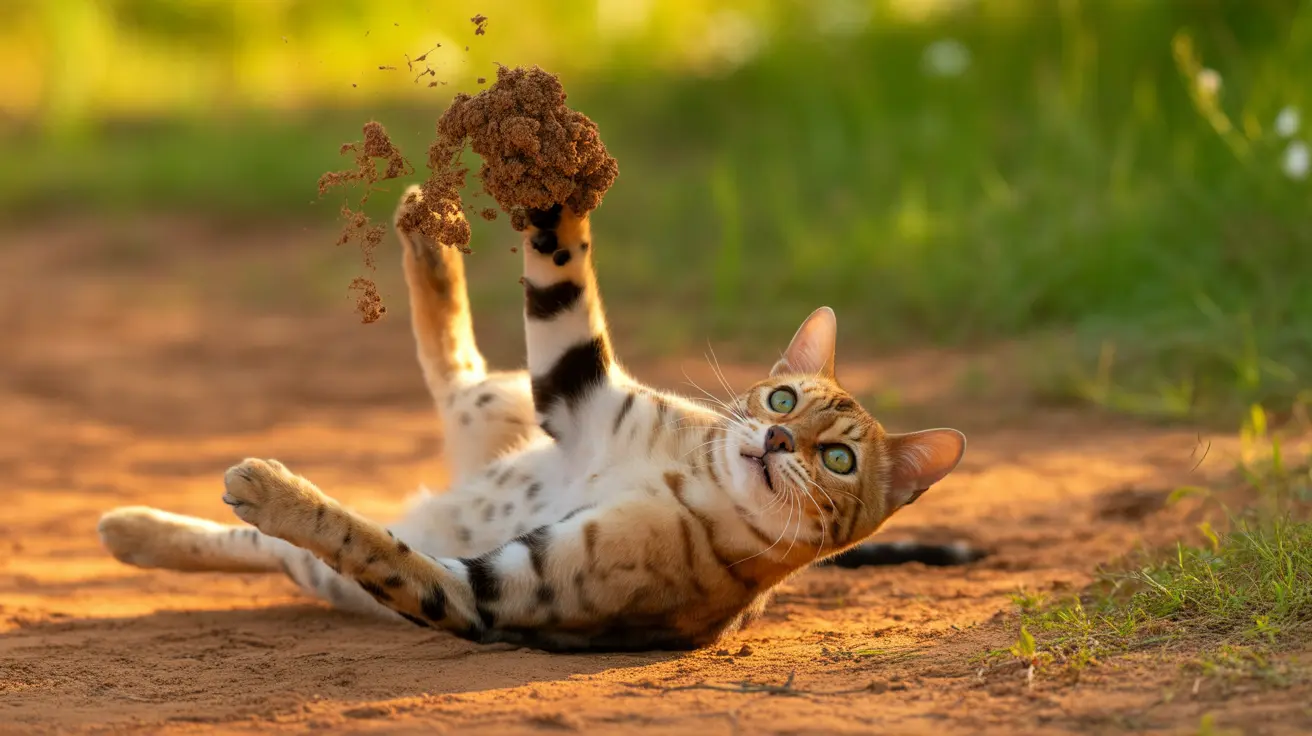Cat owners are often puzzled by their feline companions' seemingly peculiar habit of rolling around in dirt. While it might look messy to us, this natural behavior is deeply rooted in cats' instinctive communication, comfort, and survival strategies. Understanding why cats engage in this behavior can help pet owners appreciate the complex and fascinating world of feline behavior.
Rolling in dirt is more than just a random action—it's a sophisticated form of communication and self-care that serves multiple important purposes for our whiskered friends.
Territory Marking and Communication
Cats are territorial creatures with an intricate system of scent communication. When a cat rolls in dirt, they're doing much more than just getting dusty—they're actively marking their territory and sending complex messages to other animals.
How Scent Marking Works
Each roll deposits pheromones from scent glands located on the cat's face, tail base, and paws. These chemical signals communicate crucial information about the cat's identity, emotional state, and territorial boundaries. By rolling in dirt, cats essentially create a personal signature in their environment, signaling to other cats that this space is claimed and familiar.
Physical Comfort and Skin Health
Beyond communication, dirt-rolling serves several important physical functions for cats. This behavior is a natural way for cats to address various bodily needs and provide self-grooming benefits.
Scratching and Skin Stimulation
The rough texture of dirt provides an excellent surface for cats to scratch hard-to-reach areas, relieving itches and providing tactile stimulation. This can help alleviate minor skin irritations and offer a satisfying sensory experience for the cat.
Temperature Regulation
Interestingly, dirt-rolling can also help cats manage their body temperature. Since cats don't sweat like humans, they rely on alternative cooling methods. The moist layer beneath freshly dug soil can provide a cooling effect, helping cats regulate their body heat during warm days.
Emotional Expression and Contentment
Rolling in dirt isn't just a functional behavior—it's also a sign of a happy, secure cat. This action typically occurs when a feline feels completely safe and relaxed in their environment.
A Sign of Happiness
Cats generally only engage in dirt-rolling when they feel completely at ease. The behavior can be compared to a human stretching or relaxing, representing a moment of pure contentment and joy. It's often accompanied by other signs of happiness like a relaxed posture and a calm demeanor.
When to Be Concerned
While occasional dirt-rolling is normal, persistent or excessive rolling might indicate underlying health issues that require attention.
Potential Health Indicators
If your cat is rolling excessively or seems unusually focused on scratching, it could signal problems like:
- Flea infestations
- Skin allergies
- Fungal infections
- Food sensitivities
Frequently Asked Questions
Why do cats roll in dirt and how does it help them mark their territory?
Cats roll in dirt to deposit pheromones from their scent glands, creating a chemical communication system that marks their territory and communicates their presence to other animals.
Can rolling in dirt indicate that my cat is happy and feeling safe?
Yes, cats typically only roll in dirt when they feel completely secure and content in their environment. It's a sign of relaxation and emotional well-being.
How does rolling in dirt help cats with physical comfort, like scratching or cooling down?
Rolling provides a way to scratch hard-to-reach areas, stimulate the skin, and help regulate body temperature, especially in warm weather.
When should I be concerned if my cat is rolling excessively in dirt or scratching?
If rolling is accompanied by signs of distress, constant scratching, visible skin irritation, or changes in behavior, it's best to consult a veterinarian.
Are there any health risks associated with my cat rolling in dirt, such as parasites or infections?
While occasional dirt-rolling is normal, frequent rolling could expose cats to external parasites. Regular check-ups and preventative treatments can help mitigate these risks.






